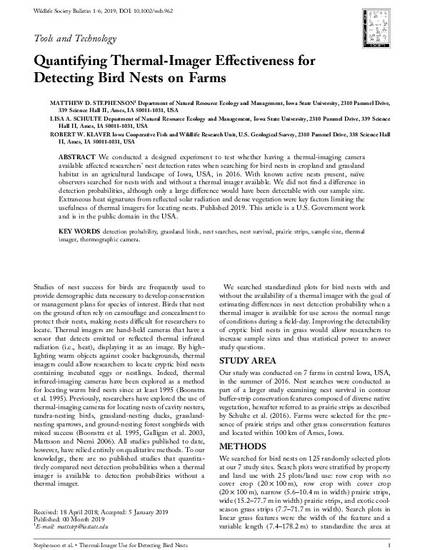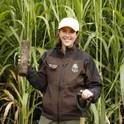
Article
Quantifying Thermal‐Imager Effectiveness for Detecting Bird Nests on Farms
Wildlife Society Bulletin
Document Type
Article
Disciplines
Publication Version
Published Version
Publication Date
1-1-2019
DOI
10.1002/wsb.962
Abstract
We conducted a designed experiment to test whether having a thermal‐imaging camera available affected researchers’ nest detection rates when searching for bird nests in cropland and grassland habitat in an agricultural landscape of Iowa, USA, in 2016. With known active nests present, naïve observers searched for nests with and without a thermal imager available. We did not find a difference in detection probabilities, although only a large difference would have been detectable with our sample size. Extraneous heat signatures from reflected solar radiation and dense vegetation were key factors limiting the usefulness of thermal imagers for locating nests.
Rights
Works produced by employees of the U.S. Government as part of their official duties are not copyrighted within the U.S. The content of this document is not copyrighted.
Language
en
File Format
application/pdf
Citation Information
Matthew D. Stephenson, Lisa A. Schulte and Robert W. Klaver. "Quantifying Thermal‐Imager Effectiveness for Detecting Bird Nests on Farms" Wildlife Society Bulletin (2019) Available at: http://works.bepress.com/lisa_schulte/70/

This article is published as Stephenson, Matthew D., Lisa A. Schulte, and Robert W. Klaver. "Quantifying Thermal‐Imager Effectiveness for Detecting Bird Nests on Farms." Wildlife Society Bulletin. doi: 10.1002/wsb.962.